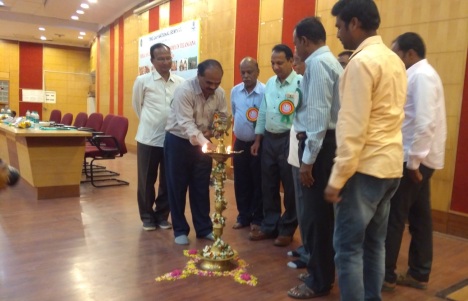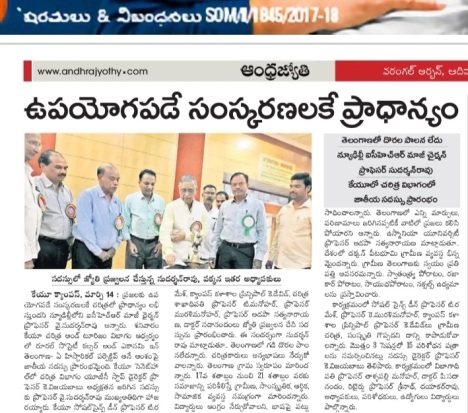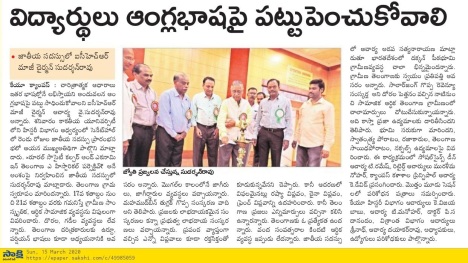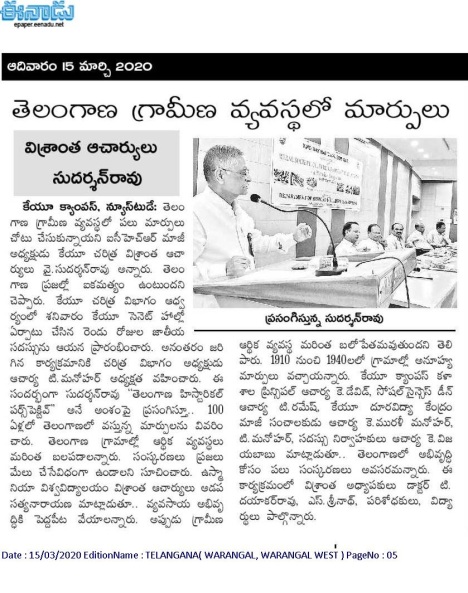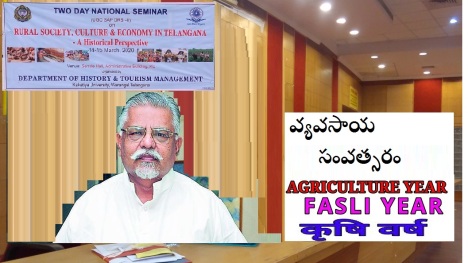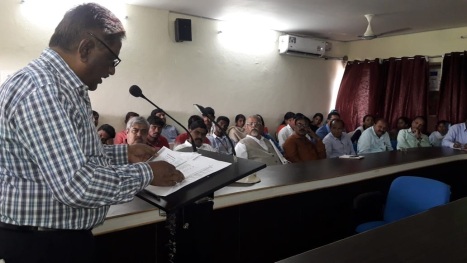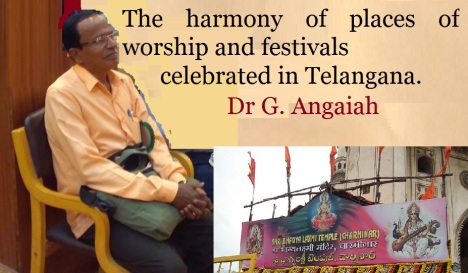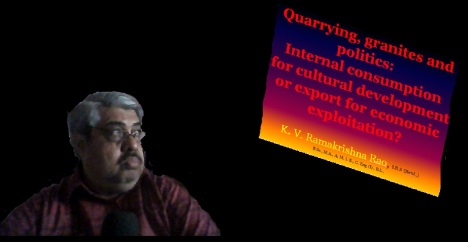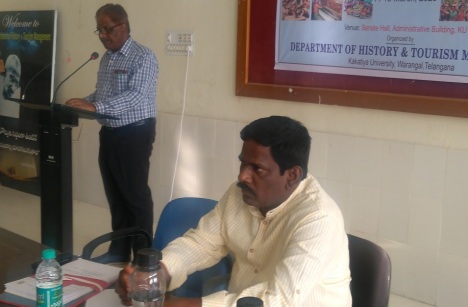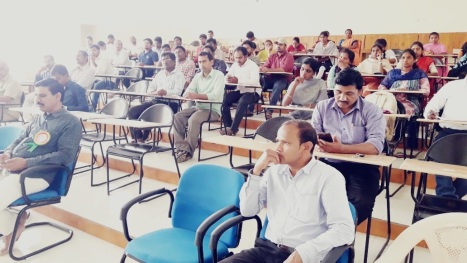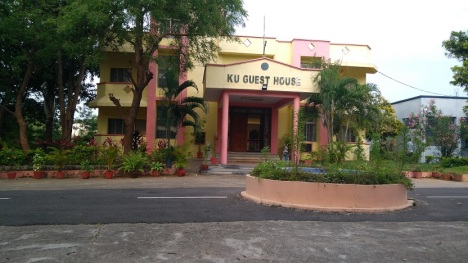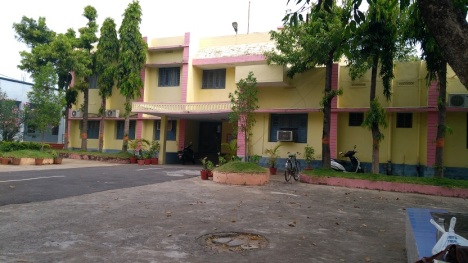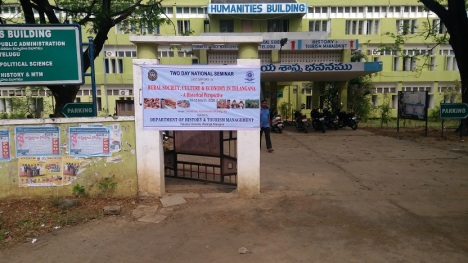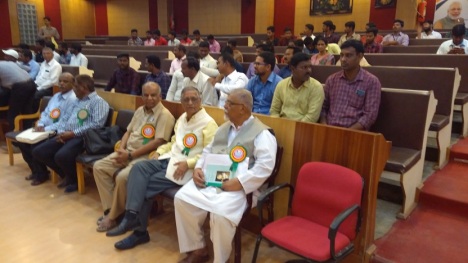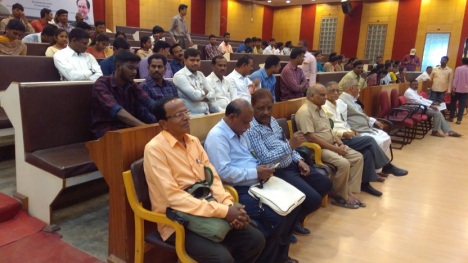The National Seminar on Rural Society, Culture and Economy in Telangana – Historical Perspective – held at the Kakatiya University on March 14th and 15th 2020 [3]

The Telangana historiography: The Telangana history writers and historiographers have been trying to bring everything within the Telangana geography, history and thus, more generalization, biased interpretation and forced conclusions are thrusted on the readers. They even try to ignore the Andhra history, archaeology, epigraphy, numismatics etc., as if they are alien to them. With a single, few and stray cases, they try to generalize and declare that their finding would be applicable to the whole of Telangana. Nowadays, some sort of statistical data are used showing tables and charts. The researchers are interviewing or getting data with 10 to 100 persons, sites, villages etc., and use to form such tables and charts. With that and their prepared questionnaire, they try to interpret to come to their already decided conclusion. Thus, in such predetermined processes, they ignore the data, information and facts that are not useful for or against their conclusion. They even do not make any whisper in their papers, dissertations or books. The statistical data study in history cannot be accepted, as the data differ and all cannot be equated to form any theory to come to a conclusion.

The names of vocation, job and duties of the Mughal and Colonial periods have been made as castes: The names of vocation, job and duties of the Mughal and Colonial periods have been made as castes. Thus, names of such jobs, occupations, or works are treated as specific castes. Thus, patel, patwari, Talati, Talaiyari, Kotwal, Patnaik, Karnam, Adhikari, Maniyakarar, Shanbog, Kulkharni (official), Tashildar, Zakirdar, Gomastha (bailiff), bania (evaluator, retailer), diwani (supervisor), peyada (guard), sowcar, shroff, saraf (money lenders), Patwardhan, Deshmukh, Gurjar, Pande etc. As could be noted, the jobs wre not permanent and any other person could get such job, if he had capabilities or the ruler changed. Within 100-300 years, these groups were changed with their jobs and duties. Similarly, there were many workers – Sootar / sutar (carpenter), lohar (smith), chambar (shoe/harness-maker), koombhar (potter), nhawee / Navi / navidhan (barber), pureel (washerman), bhar (servant), bheel (watchman), koli/kolee (water-career), mang (rope-maker/servant), muhar / Ramoshi (servant), Mohammedan (butcher) etc., but, they were also changing with times and places. These are given only for illustrative purposes. Ironically, the Telangana researchers are not going deep into the Mughal and colonial documents, but, relying upon the books written recently. As the authors had a particular focus or the result, they wanted to arrive at, evidently, they have not been balanced enough to tell the facts of both sides.

Who were “Patels” in Telangana village?: Telangana researchers interpret that generally in every village patel and patwari, deshmukh occupied the next place of Doras. They argue that these posts were allotted to upper castes, as if , it were a rule, but, it was not so. The patel could belong to any caste but the patwari was invariably a Neogi Brahmin, thus, argues one researcher. Now the patwaris, Police patels were actually in charge of law and order in the village. Nizam wanted to develop this region and appointed contractors or officials like Ijaradars, banjaradars, patels and patwaris. The tax payer was called rayat, malguzar, etc. Many times, these were conferred to certain persons as title also.

Who were “Patwaris” in Telangana village?: Patwari occupied the next place of Dora. the patwari was invariably a Neogi Brahmin. They lived in comfortable bungalows in the style of the landlords served by “Jeethagallu” and “Vettollu”. These people were mischievous and dishonest. “It was generally feared that enmity with a patwari led only to the grave[1]. Now the patwaris, Police patels were actually in charge of law and order in the village. The patwari used to send “Rojnamchas” (daily activities in the village) to government officials, the dora used to take interest in them[2].In every village patwari belongs to Brahmin caste. (Neogi Brahmin). He looks after revenue records of the village. He also live like dora in a banglow and served by Jeethagallu (servants) and vettollu (Vetti labourers).

Patwari, Talati, Talaiyari etc: The Patwar system was first introduced in the Indian subcontinent, during the rule of Sher Shah Suri, and was further enhanced by Akbar. The British colonial era made minor amendments but maintained the system. Also known as Talati and his duties of a include maintaining crop and land records (record of rights) of the village, collection of tax revenue, collection of irrigation dues. The post of the Talati replaced that of the Kulkarni which no longer exists in Gujarat and Maharashtra. The duties of a talati are performed in other states of India under a different title, for example, the talati is called a Patwari in Telangana “thalaiyari” in Tamizhagam[3].

Mudhali, Mudaliar etc: Mudali is the first person of the village or headman. Mudai + ar, yar with reverence, becomes, Mudaliar / Mudaliyar. Mudaliar (alternatively spelled: Muthaliar, Muthaliyar, Mudali, Muthali or Moodley) is a title used by people belonging to various Tamil castes.Castes using the title speak Tamil as their native language. The title was mostly used among Tamils from Tamil Nadu and Sri Lanka, and was given to a high-ranking military officer. The title was primarily used by the communities like the Agamudayars, Karaiyars, Sengunthars and Vellalars. Other communities adopted it as means to present themselves as superior to the social status which they actually held. Now, Mudaliars have been dominant groups in Tamilnadu controlling political power and system.

Komati, Gomathi, Chetti, etc: The word is derived differently, because of the misunderstanding and pronunciation of the letter “ko” with “mati.” Definitely, the wealth was equated with cows = ga, go, gau, in the ancient period. Komathi, Kopathi[4] have been common names of the Vaishya names. The Komati is a trading community found primarily in southern and central India, that is currently organised as a caste. The members of the Komati caste are commonly engaged in banking, money lending and other business pursuits. The community consists of many sects who are followers of Hinduism, namely the Gaura or Gavara, the Beeri, the Thrivarnika and the Kalinga, along with the minuscule Jaina Komatis who are followers of Jainism. There is epigraphic evidence that the term Komati was in use by the 11th century CE. The Komati merchants were associated with the town of Penugonda in the West Godavari district of Andhra Pradesh. Inscriptions from the Godavari, Krishna and Guntur districts from 11th century refer to the merchants referred to as the “Lords of Penugonda”. The wealthier sections of the Komatis were addressed as Setti, Chetti or Chettiyar, all derived from the Sanskrit term Sreshthi. Their trade associations bore the name nagaram. They also participated in long-distance trade networks called pekkandru (literally “the many”). During the times of the Vijayanagara Empire, they physically relocated themselves for commercial efficiency in various parts of South India.

Kotwal, Kotval, Citwal, Kothaval etc: Kotwals also spelt as Cotwal, was a title used in medieval India for the leader of a Kot or fort. Kotwals often controlled the fort of a major town or an area of smaller towns on behalf of another ruler. It was similar in function to a British India Zaildar From Mughal times the title was given to the local ruler of a large town and the surrounding area. However, the title is also used for leaders in small villages as well. Kotwal has also been translated as Chief police officer. Major area of Chennai town was known as “Kothaval chavadi,” now disappeared [vegetable, fruits, flower markets shifted to Koyambedu market complex].

Bhudhan movement, what happened?: The Bhoodan Movement attempted to persuade wealthy landowners to voluntarily give a percentage of their land to landless people[5]. Philosophically, Bhave was influenced by Mahatma Gandhi’s Sarvodaya movement. Landless labourers were given small plots on which they were welcome to settle and grow their crops. Bhoodan Acts were passed that stated that the beneficiary had no right to sell the land or use it for non-agricultural purposes or for forestry. For example, Section 25 of the Maharashtra State Bhoodan Act states that the beneficiary (who must be landless) should only use the land for subsistence cultivation. If the “owner” failed to cultivate the land for over a year or tried to use it for non-agriculture activities, the government would have the right to confiscate it. Bhave wanted peasants to give up using bullocks, tractors or other machines for agricultural purposes. This was called rishi-kheti. He also wanted the people to give up using money in the form of kanchan-dan. He was followed by crowds nearly everywhere he went. The movement had the support of Congress. JP Narayan withdrew from active politics to join the Bhoodan movement in 1953. The Nizam of Hyderabad, HEH Mir Osman Ali Khan donated 14,000 acres of his personal land to the Bhoodan Movement
© K. V. Ramakrishna Rao
17-03-2020

[1] Reddy P.N. Telugu samethalu janajeevanam, Thirupathi Srinivas. Murali Publication, 1983.
[2] Dasharathi Rangacharya 1987. Chillardevullu, Hyderabad Vishalandra 45
[3] Inscriptions give different meaning – Talaiyāri.—(SII 1), Tamil; same as Kannaḍa Talāri; a watchman. See Talavara. Note: talaiyāri is defined in the “Indian epigraphical glossary” as it can be found on ancient inscriptions commonly written in Sanskrit, Prakrit or Dravidian languages.
[4] Gopathi Narayana Chetti Street from Panagal Park to Anna flyover in Chennai has been prominent road in Thyagaraya Chetti Nagar.
[5] https://en.wikipedia.org/wiki/Bhoodan_movement
Filed under: Acharya, agrarian, agriculture, Bhudhan, Bhudhan Movement, bifurcate, colonial, constitution, coolie, dalit, dalit buddhhist, dalit muslim, deshmuk, deshmukh, gadi, interpretation, jagirdar, K. V. Ramakrishna Rao, labour, nizam, patwari, shia, social reform, Social Reform Movement In India, social reformation, velama, Vinobha bhave | Tagged: bathukamma, brahman, chetti, clerk, dalit literature, dalit muslim, deshmukh, gumastha, jagirdar, kamma, kappu, karnam, khastriya, komati, leader, patel, patwari, political economy, reddy, rural society, shudra, vaisya, velama, witer | Leave a comment »


